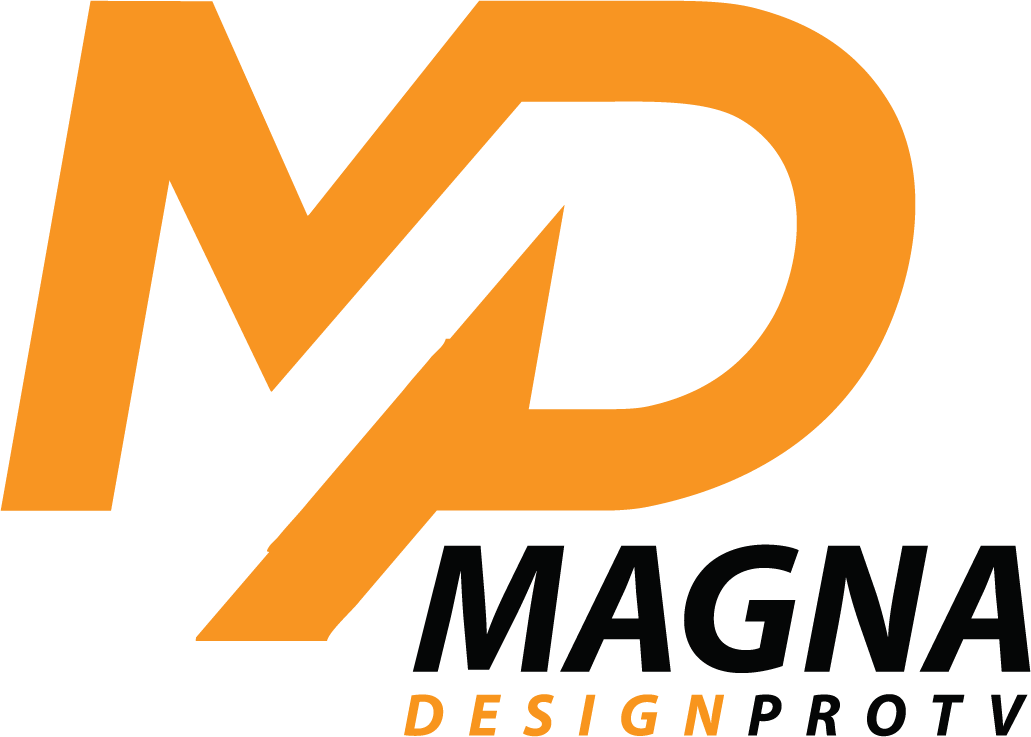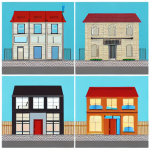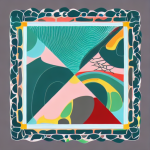
Introduction
Overview of design solutions
Design solutions play a crucial role in blending functionality, style, and innovation. They serve as the foundation for creating products and spaces that not only meet the practical needs of users but also evoke a sense of aesthetic appeal and originality. An overview of design solutions provides a comprehensive understanding of the various approaches and techniques used to achieve this harmonious balance. By exploring the different strategies employed in the design process, professionals can gain insights into how to create solutions that seamlessly integrate form and function, resulting in captivating and impactful designs.
Importance of blending functionality, style, and innovation
Blending functionality, style, and innovation is of utmost importance in design solutions. It not only enhances the overall aesthetic appeal but also improves the usability and practicality of a product. By combining these three elements, designers can create products that not only look visually appealing but also serve their intended purpose effectively. Functionality ensures that the product meets the needs and requirements of the users, while style adds a unique and attractive visual appeal. Innovation, on the other hand, brings new and creative ideas to the design, pushing the boundaries of what is possible. The seamless integration of functionality, style, and innovation results in designs that are both visually stunning and highly functional, making them stand out in the market and capturing the attention of consumers.
Purpose of the article
The purpose of the article ‘Design Solutions: Blending Functionality, Style, and Innovation’ is to explore the importance of combining functionality, style, and innovation in the field of design. In today’s fast-paced world, it is crucial for designers to create solutions that not only meet the functional needs of users but also incorporate elements of style and innovation to enhance the overall user experience. This article aims to shed light on the various ways in which designers can achieve this balance and create designs that are both aesthetically pleasing and highly functional.
Understanding Functionality in Design
Definition of functionality in design
Functionality in design refers to the ability of a product or space to fulfill its intended purpose effectively and efficiently. It encompasses the practical aspects of design, ensuring that the user’s needs and requirements are met. A functional design not only focuses on the usability and ease of use but also takes into consideration the aesthetics and overall user experience. It strives to strike a balance between form and function, blending practicality with style and innovation. By incorporating functionality into design, we can create products and spaces that not only look visually appealing but also enhance the user’s daily life by providing convenience and functionality.
Examples of functional design solutions
Functional design solutions are essential for creating products and spaces that not only look stylish but also serve a purpose. These solutions combine functionality, style, and innovation to provide users with a seamless experience. For example, in the field of interior design, functional design solutions can include clever storage solutions that maximize space, ergonomic furniture that promotes comfort and productivity, and smart home technology that enhances convenience and efficiency. By incorporating these functional design solutions, designers can create spaces that are both visually appealing and highly practical.
Benefits of incorporating functionality in design
Incorporating functionality in design offers numerous benefits. Firstly, it enhances the usability and practicality of the product or space. By considering the needs and preferences of the users, functional design ensures that the end result is intuitive and user-friendly. Secondly, functional design promotes efficiency and productivity. When the design elements are optimized for their intended purpose, tasks can be completed more easily and quickly. Additionally, incorporating functionality in design can also contribute to cost savings. By eliminating unnecessary features or streamlining processes, functional design reduces waste and maximizes resources. Lastly, functional design can enhance the overall aesthetic appeal. When functionality is seamlessly integrated with style and innovation, it creates a harmonious balance that is visually pleasing and captivating. In conclusion, incorporating functionality in design is essential for creating products and spaces that are both practical and visually appealing.
Exploring Style in Design
Definition of style in design
Style in design refers to the aesthetic choices and visual elements that are incorporated into a product or space. It encompasses the overall look, feel, and character of the design, and plays a crucial role in creating a unique and engaging user experience. The definition of style in design goes beyond mere decoration; it involves the careful selection and arrangement of colors, shapes, textures, and materials to evoke a specific mood or convey a particular message. A well-executed style can enhance the functionality of a design by making it more intuitive and user-friendly, while also adding a sense of beauty and sophistication. In today’s competitive market, where consumers are increasingly seeking products that not only perform well but also look visually appealing, understanding and effectively incorporating style into design is essential for success.
Different styles in design
Different styles in design play a crucial role in creating visually appealing and functional products. From minimalist and modern designs to vintage and rustic aesthetics, each style offers a unique approach to blending functionality, style, and innovation. Minimalist designs focus on simplicity and clean lines, creating a sleek and clutter-free look. Modern designs embrace sleek materials and geometric shapes, showcasing a contemporary and cutting-edge feel. Vintage designs draw inspiration from the past, incorporating nostalgic elements and timeless charm. Rustic designs highlight natural materials and textures, evoking a warm and cozy atmosphere. By understanding and incorporating different design styles, professionals can create products that not only meet the functional requirements but also captivate with their aesthetic appeal and innovative features.
Impact of style on user experience
When it comes to user experience, style plays a crucial role in making a lasting impact. The design of a product or website not only affects its visual appeal but also influences how users interact with it. A well-designed interface that incorporates elements of style can enhance usability, create a sense of trust, and engage users on a deeper level. By blending functionality with innovative and stylish design solutions, businesses can create a user experience that is not only visually appealing but also intuitive and enjoyable to use.
Innovation in Design
Definition of innovation in design
Innovation in design refers to the process of introducing new and creative ideas to improve the functionality, style, and overall experience of a product or solution. It involves thinking outside the box and pushing the boundaries of traditional design practices. By incorporating innovative elements, designers can create solutions that not only meet the needs of users but also provide a unique and memorable experience. Innovation in design is essential in today’s rapidly evolving world, where consumers are constantly seeking new and improved products that enhance their lives. It is a driving force behind the development of cutting-edge technologies and groundbreaking designs that shape the way we interact with the world around us.
Examples of innovative design solutions
In the world of design, innovation is key to creating solutions that not only meet functional needs but also incorporate style. When it comes to blending functionality, style, and innovation, there are numerous examples that showcase the power of thoughtful design. From futuristic smart homes that seamlessly integrate technology into everyday living to eco-friendly products that prioritize sustainability, these innovative design solutions push the boundaries of what is possible. By combining functionality, style, and innovation, designers are able to create products and spaces that not only serve a purpose but also inspire and delight users. Whether it’s through the use of cutting-edge materials, intuitive interfaces, or unexpected design elements, these examples demonstrate how innovative design can enhance our lives and transform the way we interact with the world around us.
Advantages of incorporating innovation in design
Incorporating innovation in design offers numerous advantages. Firstly, it allows for the creation of unique and cutting-edge products that stand out in the market. By integrating innovative features and technologies, designers can enhance the functionality and performance of their designs, providing users with improved experiences. Additionally, innovation in design promotes sustainability by encouraging the use of eco-friendly materials and energy-efficient solutions. This not only benefits the environment but also appeals to consumers who prioritize environmentally conscious products. Furthermore, incorporating innovation in design can lead to increased customer satisfaction and brand loyalty. When designers push the boundaries of traditional design practices and introduce innovative elements, they demonstrate their commitment to delivering exceptional products that meet the evolving needs and preferences of consumers. Overall, embracing innovation in design opens up a world of possibilities and allows designers to create products that are both functional and visually appealing.
Blending Functionality, Style, and Innovation
Importance of integrating functionality, style, and innovation
When it comes to design solutions, integrating functionality, style, and innovation is of utmost importance. The seamless blend of these three elements not only enhances the overall aesthetics of a product or space but also improves its usability and user experience. Functionality ensures that the design serves its intended purpose effectively, while style adds visual appeal and creates a unique identity. Innovation, on the other hand, brings fresh ideas and cutting-edge technologies to push the boundaries of design. By integrating functionality, style, and innovation, designers can create solutions that are not only visually pleasing but also highly functional and forward-thinking.
Challenges in achieving a balance
Achieving a balance between functionality, style, and innovation is no easy feat. Designing solutions that seamlessly blend these three elements requires careful consideration and problem-solving skills. One of the main challenges in achieving this balance is finding the right combination of features and aesthetics that not only meet the functional requirements but also appeal to the target audience. Additionally, innovation plays a crucial role in pushing the boundaries of design, but it can also introduce complexities that need to be carefully managed. Designers must navigate these challenges and find creative solutions that strike the perfect balance between functionality, style, and innovation.
Successful case studies
In the world of design, successful case studies serve as shining examples of how functionality, style, and innovation can be seamlessly blended together. These case studies showcase the power of thoughtful design solutions that not only meet the practical needs of users but also elevate their experience with a touch of creativity. By analyzing these success stories, designers gain valuable insights into the techniques and strategies that can be applied to future projects. From architectural marvels to cutting-edge product designs, the realm of successful case studies inspires designers to push boundaries, think outside the box, and create solutions that leave a lasting impact on users and the design industry as a whole.
Conclusion
Summary of key points
The article ‘Design Solutions: Blending Functionality, Style, and Innovation’ explores the importance of integrating functionality, style, and innovation in design. In the summary of key points, it is evident that successful design solutions require a balance between these three elements. Functionality ensures that the design meets the intended purpose and serves its users effectively. Style adds aesthetic appeal and creates a visually pleasing experience. Innovation pushes the boundaries of design, allowing for new and exciting ideas to emerge. By blending functionality, style, and innovation, designers can create solutions that are not only visually appealing but also practical and innovative.
Future trends in design solutions
In the ever-evolving world of design solutions, it is crucial to stay up-to-date with the latest trends and innovations. As we look towards the future, several key trends are emerging that will shape the way we approach design. One such trend is the integration of technology, where functionality and style are seamlessly combined with innovative digital solutions. This includes the use of smart devices, augmented reality, and artificial intelligence to enhance user experiences and create more personalized designs. Another important trend is sustainability, as designers are increasingly incorporating eco-friendly materials and practices into their work. This not only helps to reduce the environmental impact of design solutions but also aligns with the growing demand for sustainable and ethical products. Lastly, the future of design solutions will also be influenced by the concept of minimalism, where simplicity and clean aesthetics take center stage. This approach focuses on removing unnecessary elements and creating designs that are both visually appealing and highly functional. By embracing these future trends, designers can create solutions that not only meet the needs of today but also anticipate the needs of tomorrow.
Call to action for designers
As designers, we have the power to shape the world around us through our creativity and innovative thinking. The call to action for designers is to blend functionality, style, and innovation in our design solutions. By combining these elements, we can create products and experiences that not only meet the needs of users but also inspire and delight them. It is our responsibility to push the boundaries of design and challenge the status quo, constantly seeking new ways to improve and innovate. Let us embrace this call to action and use our skills to make a positive impact on the world.
Next Steps Ready to transform your space with cutting-edge design solutions that seamlessly blend functionality, style, and innovation? Take the next step towards creating a truly remarkable environment by visiting our website at https://magnadesignprotv.com/. Explore our portfolio of exceptional designs, discover the latest trends, and learn more about our expert team of designers who are passionate about bringing your vision to life. Whether you’re looking to revamp your home, office, or commercial space, our comprehensive range of services ensures that every detail is meticulously crafted to exceed your expectations. Don’t wait any longer – let us guide you towards a space that not only meets your needs but also reflects your unique personality and taste. Visit our website today and embark on an extraordinary design journey.





